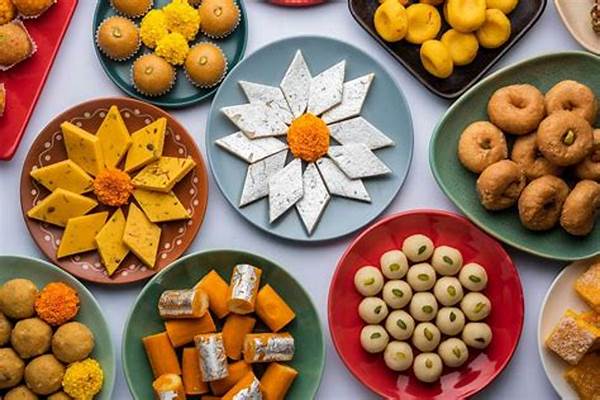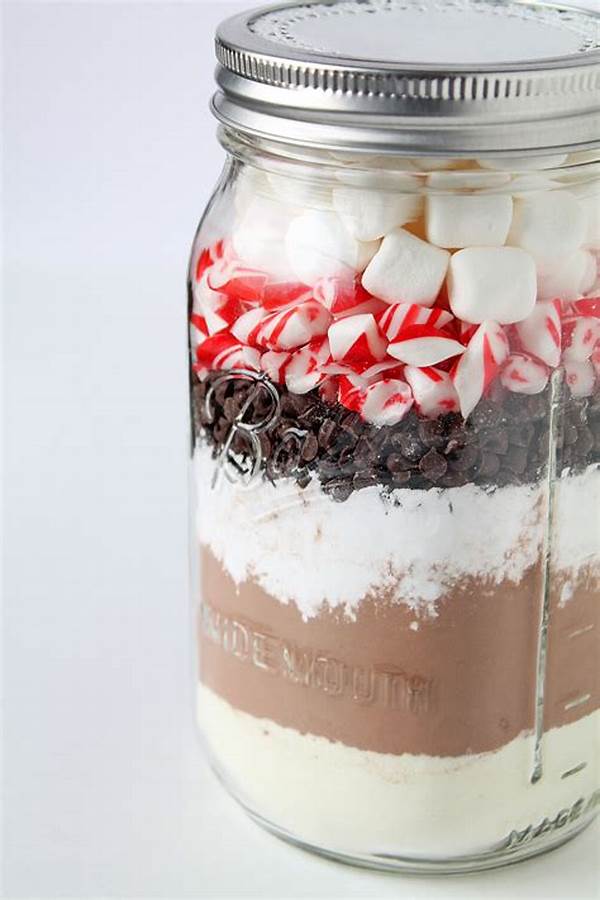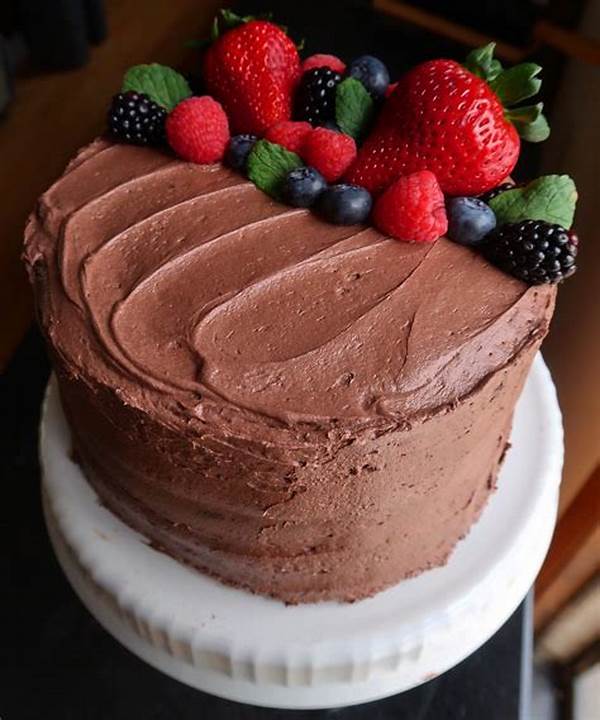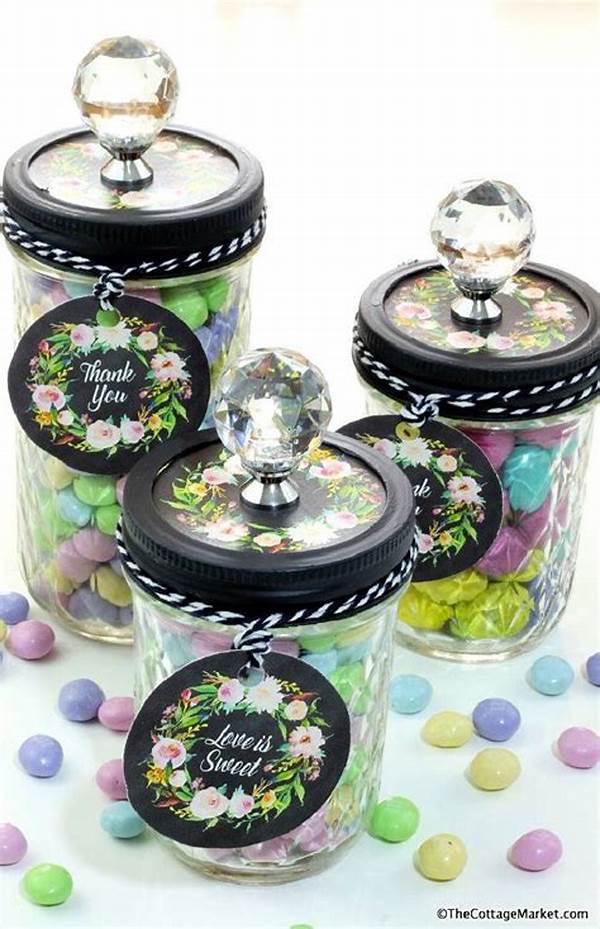Once upon a time, in a small village nestled between rolling hills and whispering trees, the end of the year was a special time. Villagers gathered in warm homes filled with laughter and the sweet scent of traditional end-of-year festive sweets. It was a time when stories were shared, and bonds were strengthened over sugary delights that spoke of history and heritage. Each treat had its own tale, passed down from generation to generation, a reminder that food is not just sustenance but a way to connect with one’s roots and loved ones.
Read Now : Nutritious Plant-based Dinner Options
The Magic of Traditional End-of-Year Festive Sweets
In the frosty embrace of winter, when snowflakes danced gently from the heavens, the anticipation of traditional end-of-year festive sweets warmed the heart. Grandmothers, keepers of recipes older than memory, began their labor of love in kitchens where the air was thick with flour and fragrant spices. Children gathered, eyes wide with wonder, clutching wooden spoons and listening to tales of how these sweets had stood the test of time. Each bite was a voyage to the past, a portal through which stories of forgotten winters were recounted. As ingredients transformed into delicate pastries and rich confections, a festive spirit enveloped the community, reminding everyone of the year’s joyous end.
Amidst the soft glow of candlelight and crackling fireplaces, these traditional end-of-year festive sweets were as much about nostalgia as they were about indulgence. Families exchanged sweets in assortments wrapped with love and good wishes. The act of sharing these treasures was a heartfelt tradition, evoking smiles and creating lasting memories. For newcomers to the village, tasting these sweets for the first time was like discovering a secret chapter of the town’s history. As the year drew to a close, the whispers of old tales grew louder, merging with the clinking of glasses and happy laughter. These timeless treats had a magical way of turning simple gatherings into cherished stories of togetherness.
Sweet Narratives of End-of-Year Traditions
1. In the heart of the village square, the air would fill with the mesmerizing scent of traditional end-of-year festive sweets as market stalls brimmed with colorful confections, each holding a story of its own.
2. Every sugar-dusted bite was an invitation to a winter’s tale, where families gathered around fires, sharing not just sweets, but the warmth of tradition and love.
3. The villagers knew well that the making of traditional end-of-year festive sweets was a symphony of laughter and storytelling, where old hands guided young ones in the art of preserving heritage.
4. As December’s chill spread through the hills, ovens across the village roared to life, baking memories into traditional end-of-year festive sweets that would be remembered long after the season had passed.
5. Amidst the twinkling lights, the taste of traditional end-of-year festive sweets was a reminder of hope and renewal, a sweet promise that every ending ushered a new beginning.
A Journey Through Sweets of Yore
In the cozy kitchens of that charming village, stories were kneaded into dough and woven through the fibers of traditional end-of-year festive sweets. Time-honored rituals came to life as families celebrated the culmination of another year. The making of these sweets was no mere culinary exercise; it was a familial dance passed through generations. It began with carefully selected ingredients – whispers of cinnamon, a touch of nutmeg, and the golden glow of honey. As hands skillfully mixed batter, tales of old adventures and beloved ancestors unfolded, filling the air with nostalgia.
The crafting of these sweets became a bonding ritual that transcended time, where both laughter and silence held meaning. The youngest learned from elders, preserving not just flavors but the spirit of unity. On the eve of the new year, as bells rang out across the frozen fields, these confections found their way to decorated tables. The village celebrated not just another year’s end but the reaffirmation of traditions through the art of sharing and tasting these sweet tokens of affection. These traditional end-of-year festive sweets were more than desserts; they were stories retold on tongues and savored in hearts.
Time-Honored Sweets and Their Tales
1. Each village had its own version of end-of-year sweets, recipes tailor-made to echo the heritage of its people, differing only in the tales they carried.
2. Certain sweets were said to bring good fortune in the new year, laden with symbolism as rich as their flavors.
3. The crafting of traditional end-of-year festive sweets was as diverse as the people who made them, each adding personal touches, making each treat unique.
4. Sharing these sweets was an ancient ritual, a blessing for prosperity wrapped in waxed paper and presented with affection.
5. Even the simplest of treats became a masterpiece, a canvas painted with the love and care of those who made them.
Read Now : Simple Techniques For Gluten-free Cooking
6. Confections like these were the stars of end-year feasts, bringing extra sparkle to the twinkling lights and festive laughter.
7. Tasting a traditional sweet from another family opened doors to new friendships, blending lives in harmonious sweetness.
8. These sweets were often the first creation children learned, a culinary rite of passage into the cultural tapestry of the village.
9. As the countdown to midnight began, sweet crumbs littered tables, speaking of an evening well-cherished.
10. Each story told about these sweets carried lessons from the past, ensuring they remained alive in the hearts of many.
The Heartbeat of Tradition
The story of this village and its traditional end-of-year festive sweets reached beyond the confines of geography. It resonated with universal themes of love, legacy, and the eternal passage of time. In homes where generations lived under one roof, the shared experience of crafting these sweets became a metaphor for life itself—a delicate balance of individual roles united by common purpose.
Throughout the year, routines and responsibilities dictated daily lives, but as the end-of-year festivities approached, a palpable excitement crept into the air. It was during these times that the village pulsed with collective creativity and the reaffirmation of kinship. These confections provided far more than caloric pleasure; they embodied a deeper gratitude for life’s simple joys and the people we choose to share them with.
When the new year arrived with its hopeful whispers, the last of the traditional end-of-year festive sweets lingered on the edge of memory, their flavors entwined with the laughter and warmth of those cherished moments. The sweets, like the stories they carried, had a cyclical nature, marking the close of a chapter, the promise of renewal, and a reminder that some legacies never fade. As the village looked to the future, they did so with hearts full of gratitude, eager to create new tales built on the sweet foundation of tradition.
Crafting Sweet Memories
In tales woven from sugar and spice, the village wrapped up their year with traditional end-of-year festive sweets that echoed the rhythm of life. The festive season was marked by fragrances of vanilla and chocolate blending perfectly in the warm glow of festive lights, creating an irresistible symphony that was both celebratory and comforting.
As stories bubbled forth, painting pictures of earlier times, each sweet became a part of the fabric of shared experience. Stories whispered as softly as fallen snow intertwined within batter and icing, each one a delicate brushstroke on the canvas of tradition.
A Sweet Conclusion to the Year
Embracing these traditional end-of-year festive sweets was like holding a piece of tangible joy, where flavors acted as time machines, conjuring images of family hearths and laughter echoing through years. The stories lived on long after the plates were cleared, a reminder of life’s sweetness even amidst its complexities.
The bond these traditional treats fostered was invaluable, a taste of unity and nostalgia tempered with the zest of hope. As each family savored the last of the year’s traditions, their stories grew richer, written not just in that year but in anticipation of all the years to come. As the village embraced the dawn of a new year, they did so with dreams as sweet as the cherished tales in their kitchens.




